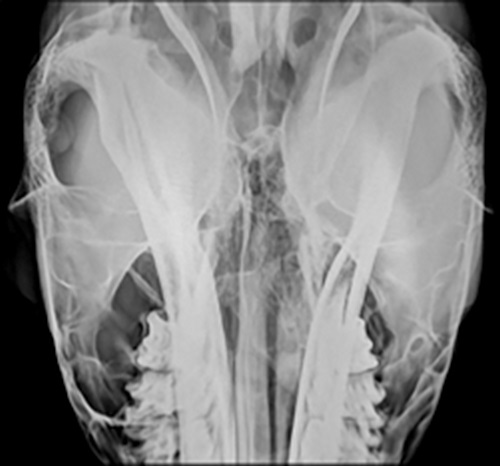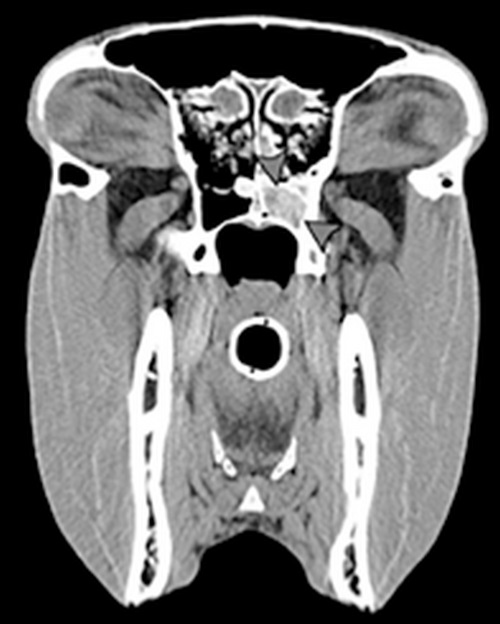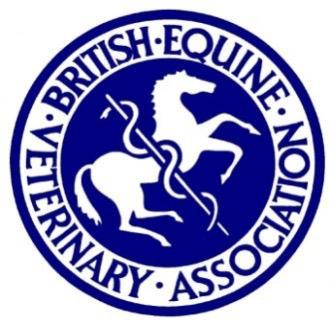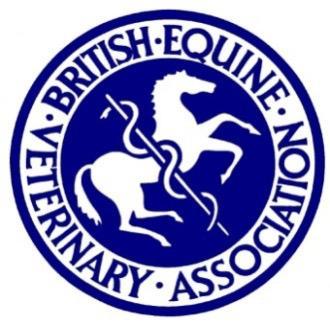The better vets can examine their equine patients the better they are able diagnose and treat them. The good news is that major progress in imaging of the head and spine is helping to achieve exactly this. The Equine Veterinary Journal (EVJ) has joined forces with Equine Veterinary Education and Veterinary Radiology and Ultrasound to showcase an online collection of the latest articles on imaging these intricate and less accessible parts of the equine anatomy http://bit.ly/2gUxtN8. They cover the advantages of cutting-edge modalities and draw useful comparisons with more readily available tools such as radiography.
The large size and shape of horses has made it difficult to use diagnostic imaging efficiently and accurately. Radiographs were the only feasible option until the availability of Computed Tomography (CT) and Magnetic Resonance Imaging (MRI) over the past decade. MRI and CT take detailed, three-dimensional images of organs, soft tissues and bone. Now with the development and availability of bigger, wider and more adaptable scanners horses can be examined in a standing position. This has significantly improved diagnostic and treatment strategies and also avoids the need for a general anaesthetic.
 |
| Head radiograph |
Radiation safety is crucial when using most forms of diagnostic imaging. Given the increase in use of CT in horses and the contamination hazards faced particularly by horse handlers, two practical articles in the collection describe the role of equine head CT, how to set up standing equine CT and the radiation exposure risks.1,2
The most revolutionary recent advance in diagnostic imaging for dental disease in horses is CT. However, a study of horses with diseased mandibular cheek teethfound that while CT is useful to identify defects in the bone and tooth it is far less useful for the identification of inflammation and tissue destruction which is far better served by MRI.3
 |
| Head CT |
The structure of the equine head is complex and subject to great variation so several articles focus on practical anatomy and interpretation of radiographs of this region.4.5 Advanced diagnostic techniques are helping with clinical and surgical approaches to problems with the equine head. The sphenopalatine sinus is challenging to assess radiographically because of its tricky position but CT can help overcome this obstacle. One of the studies describes how CT can help unravel the pathology of various equine sinonasal tumours. Other articles cover less common pathological conditions including the historical, clinical, diagnostic imaging findings and outcomes of five horses with pneumocephalus. 6,7,8
Practitioners recognise MRI as the gold standard for neurologic imaging because of the excellent soft tissue detail but the size of horses and the size of scanners makes it a challenge to use. An additional constraint is the longer acquisition time compared to CT. Notwithstanding these limitations three studies in the collection display the various benefits of using MRI for the spine and neck, including the evaluation of 84 equine head disorders, the diagnosis of cervical stenotic myelopathy, and the assessment of two foals with closed head trauma.9,10,11,12
Despite the significant advances in imaging, the horse’s back is still defying conventional systems, primarily because of its size, concludes a spinal evaluation article. New technologies such as robotic fluoroscopy and cone-beam CT, may provide a cross-sectional method to evaluate the equine spine, but for now radiographs are still better to help evaluate findings of spinous process impingement seen on scintigraphy. The take home message here is that the wide variety of abnormalities seen on scintigraphy and radiography in horses with and without back pain makes a diagnosis more likely to be achieved by physical examination rather than the imaging findings.13
Anthony Pease, associate editor of the EVJ said: “Advanced imaging is still in its infancy with sequences still being developed to help optimise the time and detail needed for diagnosing complex musculoskeletal and neurologic disorders. Continued research in a controlled environment and comparing to histopathology will allow clinicians to further their knowledge and understanding of the CT and MRI findings in the equine patients.”
Imaging the Equine Head and Spine Online Collection can be downloaded here http://bit.ly/2gUxtN8
References
1 Dakin, S.G., Lam, R., Rees, E., Mumby, C., West, C. and Weller, R. (2014) Technical set-up and radiation exposure for standing computed tomography of the equine head. Equine Vet. Educ. 26, 208-215.
2 Manso-Diaz, G., Garcia-Lopez, J.M., Maranda, L. and Taeymans, O. (2015) The role of head computed tomography in equine practice. Equine Vet. Educ. 27, 136-145.
3 Casey, M.B., Pearson, G.R., Perkins, J.D. and Tremaine, W.H. (2015) Gross, computed tomographic and histological findings in mandibular cheek teeth extracted from horses with clinical signs of pulpitis due to apical infection. Equine Vet. J. 47, 557-567.
4 Wyn-Jones, G. (1985) Interpreting radiographs 6: The head. Equine Vet. J. 17, 274-278.
5 Wyn-Jones, G. (1985) Interpreting radiographs 6: Radiology of the equine head (Part 2). Equine Vet. J. 17, 417-425.
6 Tucker, R., Windley, Z.E., Abernethy, A.D., Witte, T.H., Fiske-Jackson, A.R., Turner, S., Smith, L.J. and Perkins, J.D. (2015) Radiographic, computed tomographic and surgical anatomy of the equine sphenopalatine sinus in normal and diseased horses. Equine Vet. J. 48, 578-584.
7 Cissell, D.D., Wisner, E.R., Textor, J., Mohr, F.C., Scrivani, P.V. and Theon, A.P. (2012) Computed Tomographic Appearance of Equine Sinonasal Neoplasia. Vet. Radiol. Ultrasound 53, 245-251.
8 Dunkel, B., Corley, K.T., Johnson, A.L., Witte, T.H., Leitch, M., Marr, C.M. and Weller, R. (2013) Pneumocephalus in five horses. Equine Vet. J. 45, 367-371.
9 Manso-Diaz, G., Dyson, S.J., Dennis, R., Garcia-Lopez, J.M., Biggi, M., Isabel Garcia-Real, M., San Roman, F. and Taeymans, O. (2015) Magnetic Resonance Imaging Characteristics of Equine Head Disorders: 84 Cases (2000-2013). Vet. Radiol. Ultrasound 56, 176-187.
10 Janes, J.G., Garrett, K.S., McQuerry, K.J., Pease, A.P., Williams, N.M., Reed, S.M. and MacLeod, J.N. (2014) Comparison of magnetic resonance imaging with standing cervical radiographs for evaluation of vertebral canal stenosis in equine cervical stenotic myelopathy. Equine Vet. J. 46, 681-686.
11 Zani, D.D., Zani, D.D., Binanti, D., Riccaboni, P., Rondena, M. and Giancamillo, M.D. (2013) Magnetic resonance features of closed head trauma in two foals. Equine Vet. Educ. 25, 493-498.
12 Mitchell, C.W., Nykamp, S.G., Foster, R., Cruz, R. and Montieth, G. (2012) The Use of Magnetic Resonance Imaging in Evaluating Horses with Spinal Ataxia. Vet. Radiol. Ultrasound 53, 613-620.
13 Zimmerman, M., Dyson, S. and Murray, R. (2011) Comparison of Radiographic and Scintigraphic Findings of the Spinous Processes in the Equine Thoracolumbar Region Vet. Radiol. Ultrasound 52, 661-671.
Images attached from the paper:‘The role of the head computed tomography in equine practice’. ‘Dorsoventral radiograph of the caudal nasal cavity and paranasal sinuses, and transverse CT image at the level of the ethmoid turbinates in a horse with epistaxis.’












